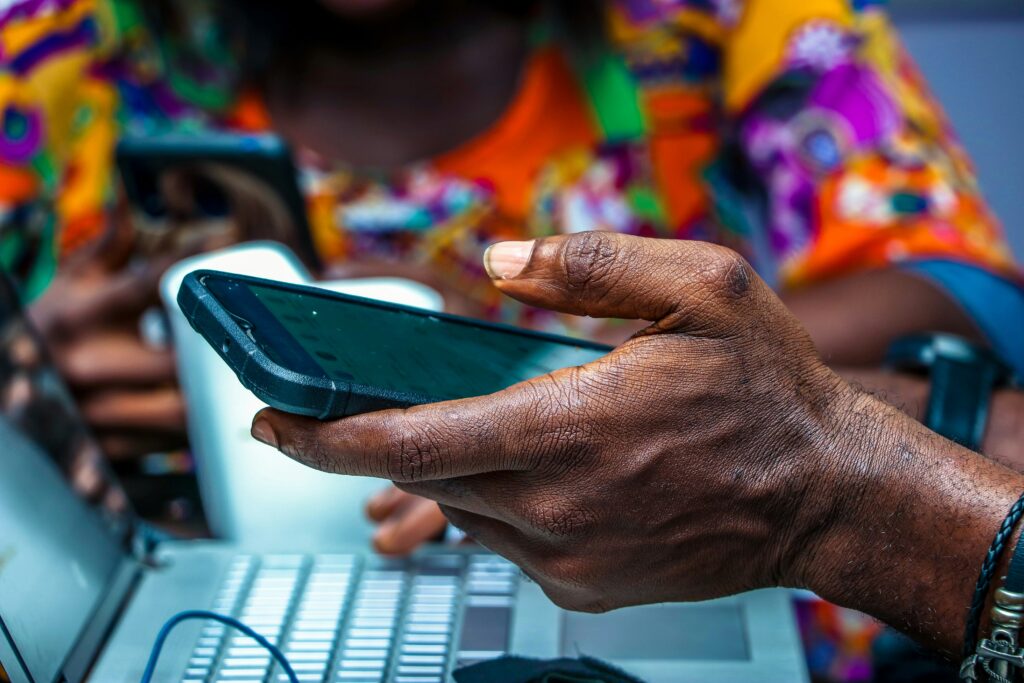Key takeaways
-
- Digital tools have opened new opportunities for savings groups, but with a few exceptions, we have yet to see them reach scale.
-
- A key barrier is donor dependence—funding is limited in scope and duration, focusing more on short-term results than efficiency or cost-effectiveness.
- One way of changing this is to rethink how savings group roll-out is funded: instead of donors, groups should pay, also for digital tools.
- If successful, digital tools funded by groups will be able to scale independently of donor funding and better address group needs.
Take action
- Explore business model innovation. As a supplier of digital tools, consider if you or your customers can charge a fee to the savings groups using the tool.
- Enable and promote beneficiary payments. As an NGO or a donor, allow or encourage implementers to ask a fee from the groups.
Introduction
Digitizing savings groups can lower costs and expand their reach, making it an obvious choice for growth. So why is widespread adoption still lagging? The answer may lie in how these groups are funded – and it’s time for a major shift.
A key barrier is donor dependence. Funding is limited in scope and duration, focusing more on short-term results than efficiency or cost-effectiveness. Forming new savings groups at scale still happens with money from donors. Donors’ attention is limited to the duration of a project, usually 3-5 years. In addition, donors want reports and evidence of impact but find it difficult to assess cost efficiency. If digitalization is to take off at a large scale, a different model is needed.
In this new model, savings groups pay for themselves. The groups pay for their setup, for their training, and for their use of digital tools. Savings groups become customers, not just
beneficiaries. Having groups pay will increase the sustainability and scale of the groups themselves, and will also create a real demand for digitalization. Finally, it will ensure that digital tools are serving a market need.
Meeting a market demand
One of the reasons savings groups work so well is that they promote activities that meet local demand. Once set up, the groups continue to exist regardless of what project documents say, regardless of donor approvals. The activities individual members do are equally based on demand, and does not follow pre-conceived project plans. Indeed, reality is often very different from what was imagined.
Visiting savings groups, I continuously get surprised by what makes a good business. How about trading sugar? Use the loan to pay for 10kg of sugar and the transport from a nearby town. Sell it in the village in smaller quantities, and you’ve made a retail business with a healthy margin. People don’t have to travel by themselves, saving them time and money – everybody wins. Or use the loan to pay workers to plough your field. Labor is cheap and then you can spend more time doing the side-business you already have.
Some months back, I visited a savings group in Eastern Uganda with an activity that would certainly not have made it into a course on business development. The group had worked tirelessly for years, saving in the box, taking out loans, and investing. The group had also invested in joint activities. To carry out business together, they looked for what was in high demand locally. And they settled on plastic chairs. The group purchased two hundred of them. People needed them for parties and having them closer to home was convenient. The chairs were good business.
This story illustrates the importance of market demand: despite reading hundreds of project descriptions promoting local entrepreneurship and group businesses, I have not once seen “chair renting business” as a proposal. It does not fit our common perception of what increases income and productivity in rural Africa. “If your map does not fit reality, better change the map”, goes a saying. Plastic chairs may not be a textbook business, but they serve a market need. We should apply the same principles to the savings groups themselves – and to digitization.
Who is the customer?
“Lack of market need” was indeed the number one reason for failure among commercial start-ups, cited by Bruce Cleveland in The Traction Gap. A market need exists if a product solves a customer problem at the right price. Fast forward to digital savings group tools: they may serve a market need, but for which customer? Today, NGOs pay for digital tools, and group members benefit from them. The true ‘customers’ of digital tools, in other words, are donors and NGOs, not the savings groups. However, this funding is often only available for a limited period, and once a project ends, so does the digital service. To achieve sustainability, the groups themselves need to become the paying customers.
The donor as the customer
We shouldn’t blame NGOs for not taking up digital tools to a larger extent. They raise funds for projects from donors. What they put in their project descriptions is what donors want. Sometimes it is digital tools. Sometimes it is not. If NGOs include digital tools funding, it will be for the duration of the project only. Continuing after a project ends requires local ownership and creativity. The most widely used group monitoring platform, SAVIX, has managed to continue expanding, now covering hundreds of thousands of groups, for the main reason that NGOs need their service for their donors. At the same time, SAVIX has managed to build in features that benefit local implementing NGOs, like lifetime access to the system. For many other digital tools, they may provide a useful service to groups, but their benefits to implementing NGOs and donors are not strong enough for them to be used at scale.
Let the groups be the customer
What is the solution? The digital tools that survive and scale are likely to be the ones that insist that the groups and their members should be customers. Providers of these tools ensure that products and services address a real need. If members are willing to pay for a service, it is useful to them. In fact, this is what CRS and other savings group implementers have done for years: making groups pay for their own training. Among a network of savings agents in Central Uganda, several made good income, charging two to four dollars per visit. Groups continue to pay year after year for a simple reason: Because the savings group agents provide a useful service to them.
Stop giving, start selling
Digital tools are continuously evolving. Network coverage is increasing. Data prices are decreasing. Several actors are experimenting with financially-viable approaches using different strategies: some link to financial services, others sell products. In these cases, digital tools can improve efficiency. There is, in other words, a business case. Paradoxically, it may not matter for their development, scale and survival. Whether it does, depends on who pays. If groups are the paying customers, they also become the decision-makers.
In other words: it is time for the sector to promote sustainable models, also for digital tool. Providers could explore business models, donors could encourage not only technical innvoation, but also business model innovation. The end goal should be to treat savings groups as customers, not just beneficiaries. If that were to happen, the biggest winners would be savings groups and their members.




